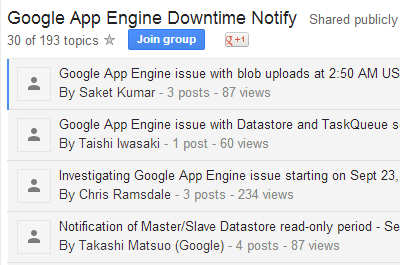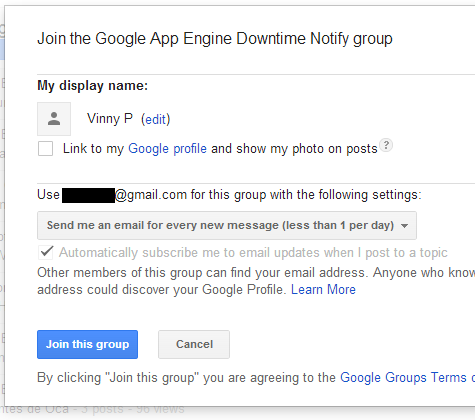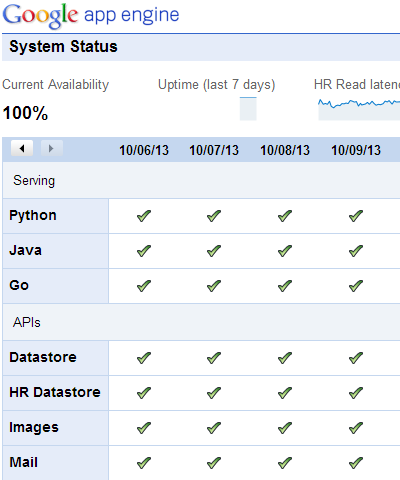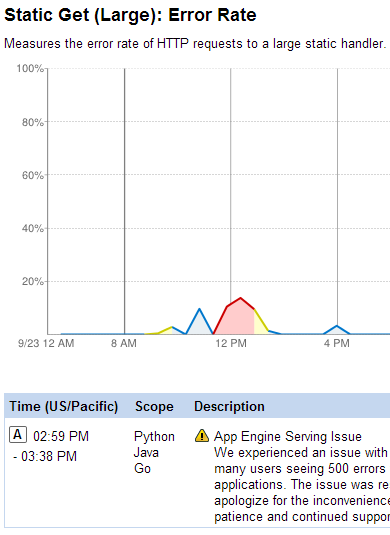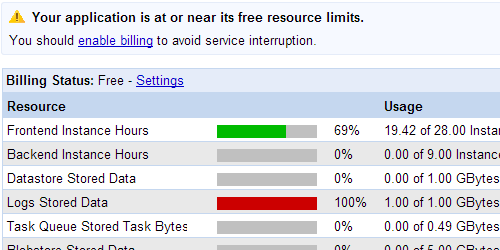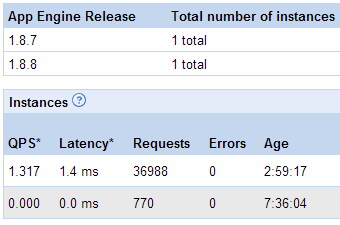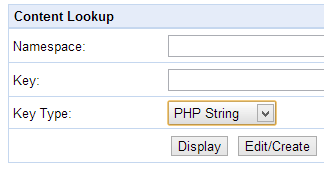App Engine downtime and maintenance notices are posted to the Google Group google-appengine-downtime-notify, located at https://groups.google.com/forum/#!forum/google-appengine-downtime-notify . It’s a good idea to monitor this list for any issues with the App Engine platform.
It’s especially important to subscribe to these notices if your application is still on the M/S datastore. The M/S datastore is occasionally moved into a read-only state for maintenance, and these maintenance periods are announced over the downtime list.
Subscribing to the google-appengine-downtime-notify list is easy: go to the above linked address and click on the button marked Join Group. As you can see from the below pictures, this list is extremely low-traffic (less than 1 email a day).
